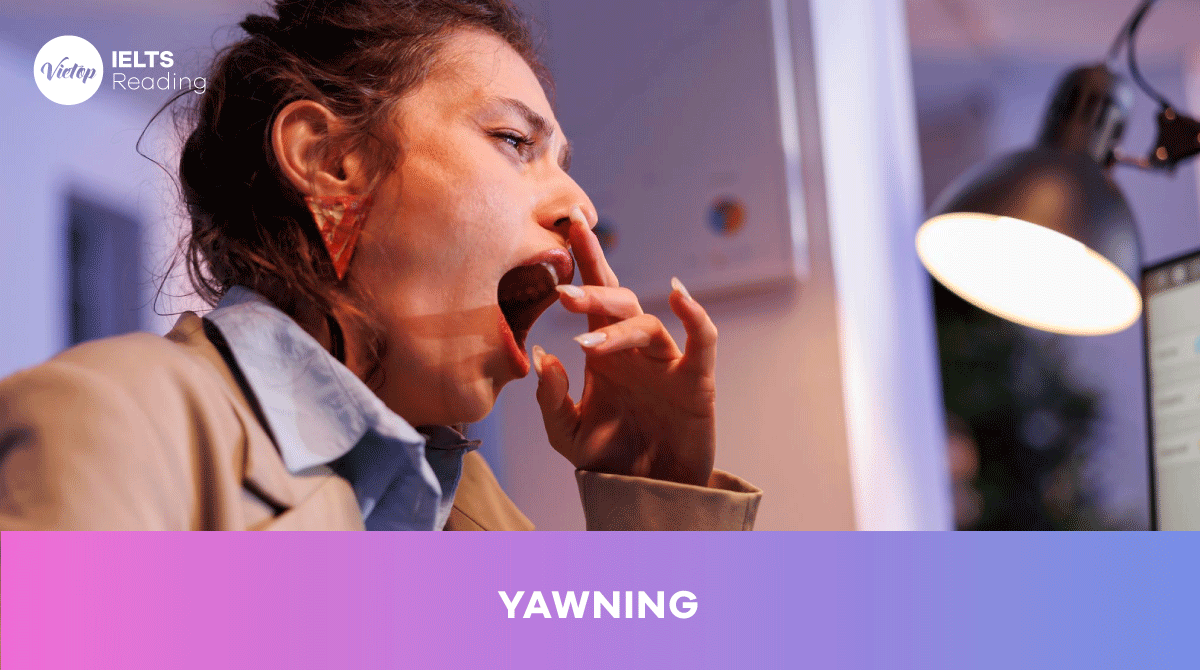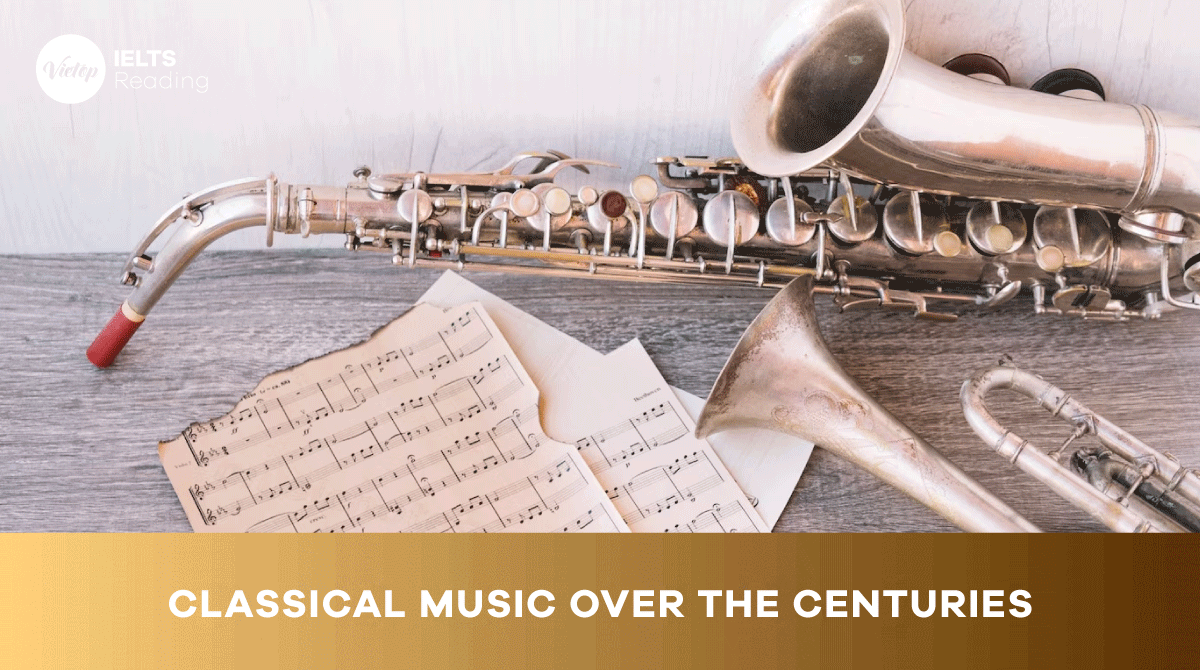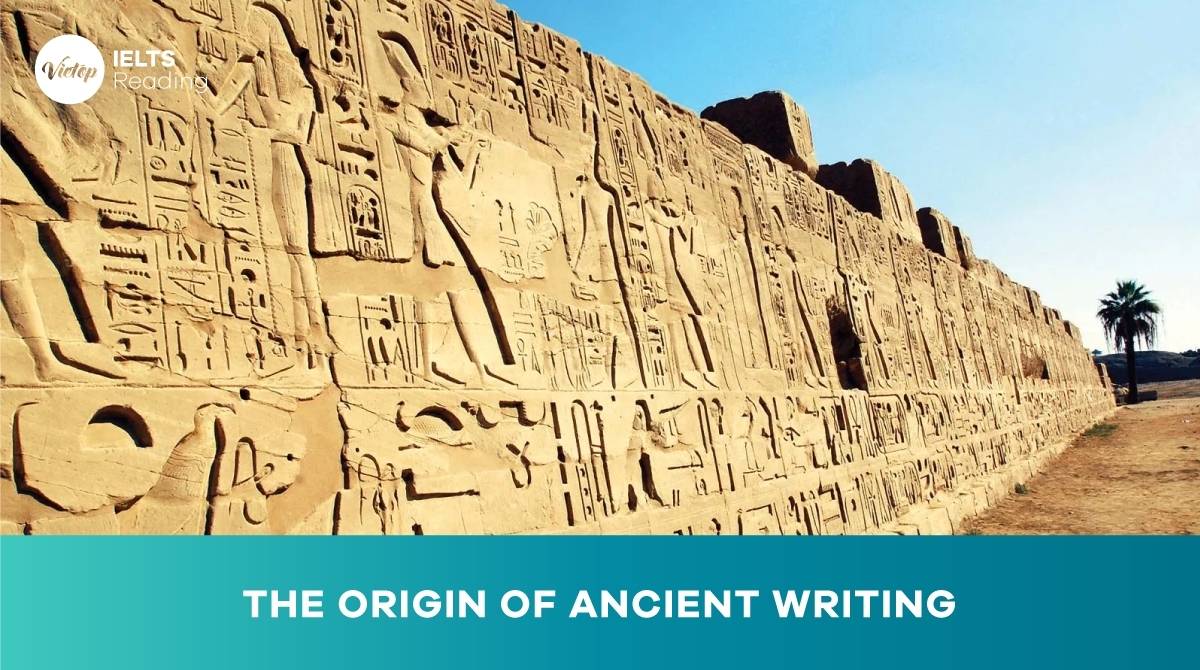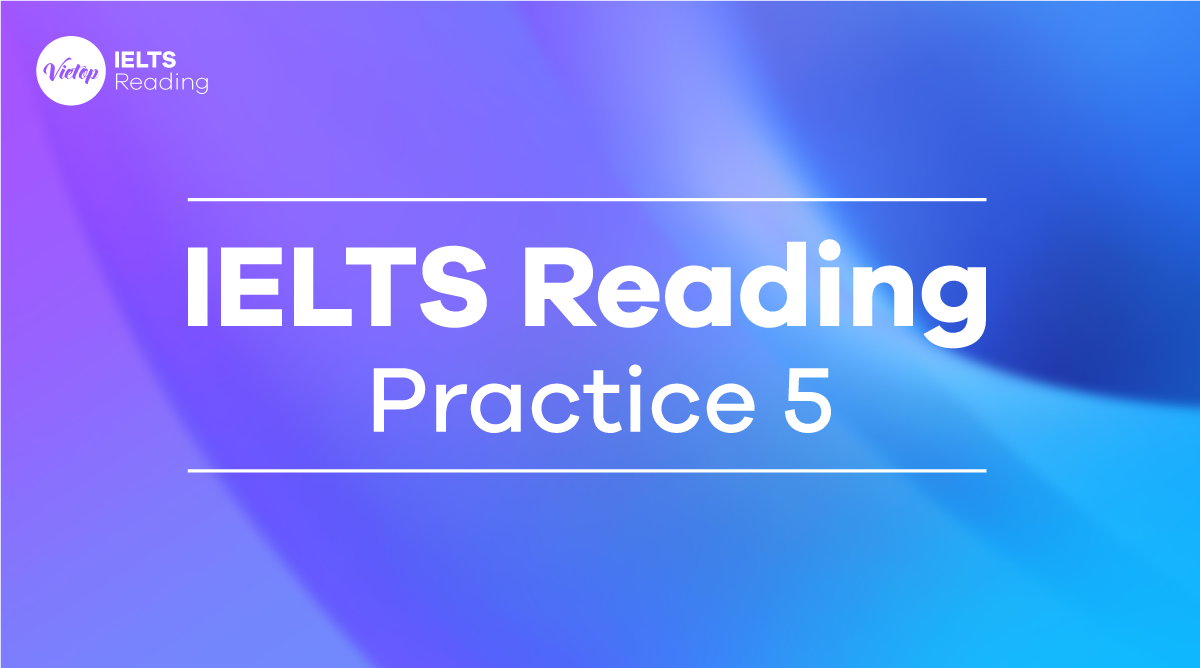IELTS Reading Practice – Fishbourne Roman Palace (Cung điện La Mã Fishbourne) với hai dạng bài true/ false/ not given và sentence completion. Đây là một đề không quá khó, nhưng vẫn đủ thử thách để luyện tập cho phần thi IELTS Reading.
Để dễ dàng “xử gọn” các dạng đề này, mình sẽ cùng bạn giải quyết các vấn đề sau đây:
- Thực hành dạng câu hỏi xác định thông tin và dạng bài hoàn thành câu.
- Cách xác định từ khóa, vị trí thông tin và giải thích đáp án chi tiết.
- Nâng cao vốn từ vựng IELTS cần học trong bài đọc.
- …
Nào! Cùng bắt đầu thôi!
Fishbourne roman palace
Fishbourne Roman Palace is in the village of Fishbourne in West Sussex, England. This large palace was built in the 1st century AD, around thirty years after the Roman conquest of Britain ,on the site of Roman army grain stores which had been established after the invasion, in the reign of the Roman Emperor Claudius in 43 AD. The rectangular palace was built around formal gardens, the northern half of which have been reconstructed. There were extensive alterations in the 2nd and 3rd centuries AD, with many of the original black and white mosaic floors being overlaid with more sophisticated coloured ones, including a perfectly preserved mosaic of a dolphin in the north wing. More alterations were in progress when the palace burnt down in around 270AD,after which it was abandoned.
Local people had long believed that a Roman palace once existed in the area. However, it was not until 1960 that the archaeologist Barry Cunliffe, of Oxford University, first systematically excavated the site, after workmen had accidentally uncovered a wall while they were laying a water main.The Roman villa excavated by Cunliffe’s team was so grand that it became known as Fishbourne Roman Palace ,and a museum was erected to preserve some of the remains .This is administered by the Sussex Archaeological Society.
In its day, the completed palace would have comprised four large wings with colonnaded fronts. The north and east wings consisted of suites of private rooms built around courtyards, with a monumental entrance in the middle of the east wing. In the north-east corner there was an assembly hall. The west wing contained state rooms, a large ceremonial reception room, and a gallery. The south wing contained the owner’s private apartments. The palace included as many as 50 mosaic floors, under-floor central heating and a bathhouse. In size, Fishbourne Palace would have been approximately equivalent to some of the great Roman palaces of Italy, and was by far the largest known Roman residence north of the European Alps, at about 500 feet (150m)square. A team of volunteers and professional archaeologists are involved in an ongoing archaeological excavation on the site of nearby, possibly military, buildings.
The first buildings to be erected on the site were constructed in the early part of the conquest in 43 AD. Later, two timber buildings were constructed, one with clay and mortar floors and plaster walls, which appears to have been a house of some comfort. These buildings were demolished in the 60s AD and replaced by a substantial stone house, which included colonnades, and a bath suite. It has been suggested that the palaces itself, incorporating the previous house in its south-east corner, was constructed around 73-75 AD. However, Dr Miles Russell, of Bournemouth University, reinterpreted the ground plan and the collection of objects found and has suggested that, given the extremely close parallels with the imperial palace of Domitian in Rome, its construction may more plausibly date to after 92 AD.
With regard to who lived in Fishbourne Palace, there are a number of theories; for example ,one proposed by Professor Cunliffe is that ,in its early phase, the palace was the residence of Tiberius Claudius Cogidubnus ,a local chieftain who supported the Romans, and who may have been installed as king of a number of territories following the first stage of the conquest. Cogidubnus is known from a reference to his loyalty in Agricola, a work by the Roman writer Tacitus, and from an inscription commemorating a temple dedicated to the gods Neptune and Minerva found in the nearby city of Chichester. Another theory is that it was built for Sallustius Lucullus, a Roman governor of Britain of the late 1st century, who may have been the son of the British prince Adminius. Two inscriptions recording the presence of Lucullus have been found in Chichester, and the redating by Miles Russell of the palace was designed for Lucullus, then it may have only been in use for a few years, as the Roman historian Suetonius records that Lucullus was executed by the Emperor Domitian in or shortly after 93 AD.
Additional theories suggest that either Verica, a British king of the Roman Empire in the years preceding the Claudian invasion, was owner of the palace, or Tiberius Claudius Catuarus , following the recent discovery of a gold ring belonging to him. The palace outlasted the original owner, whoever he was, and was extensively re-planned early in the 2nd century AD, and subdivided into a series of lesser apartments. Further redevelopment was begun in the late 3rd century AD, but these alterations were incomplete when the north wing was destroyed in a fire in around 270 AD. The damage was too great repair, and the palace was abandoned and later dismantled.
A modern museum had been built by the Sussex Archaeological Society, incorporating most of the visible remains , including one wing of the palace. The gardens have been re-planted using authentic plants from the Roman period.
Xem thêm:

Nhận tư vấn miễn phí khóa học hè
Questions 1-6
Do the following statements agree with the information given in Reading Passage ?
In boxes 1-6 on your answer sheet,write
TRUE if the statement agrees with the information
FALSE if the statement contradicts the information
NOT GIVEN if there is no information on this
1 Fishbourne Palace was the first structure to be built on its site.
2 Fishbourne Palace was renovated more than once
3 Fishbourne Palace was large in comparison with Roman palaces in Italy.
4 Research is continuing in the area close to Fishbourne Palace.
5 Researches agree on the identity of the person for whom Fishbourne Palace was constructed.
6 Fishbourne Palace was burnt down by local people.
Bạn muốn cải thiện kỹ năng Reading với những tips và chiến thuật làm bài ghi điểm với ban giám khảo. Khoá học IELTS 3.0 – 5.0 của IELTS Vietop – nơi mang đến cho bạn lộ trình học cá nhân hoá, không chỉ tự tin chinh phục ban giám khảo trong phòng thi mà còn vận dụng được kiến thức thật trong đời sống thực tế.
Questions 7-13
Complete the notes below.
Choose NO MORE THAN TWO WORDS AND/OR A NUMBER from the passage for each answer.
Write your answers in boxes 7-13 on your answer sheet.
Fishbourne Palace
Costruction
- The first buildings on the site contained food for the 7…
- The palace building surrounded 8…
- In the 2nd and 3rd centuries colour was added to the 9… of the palace.
Discovery
- The first part of the palace to the found was part of a 10…
Possible inhabitants
- Congidubnus -he is named in several writings
- Sallustius Lucullu-he may have lived there until approximately 11… AD
- Verica -a British king
- Catuarus-his 12… was found there
Present Day
- A 13… has been built on the site to help protect it.
Xem thêm:
Reading Practice: Marketing And Mind Control
Reading Practice: The origin of ancient writing
Reading Practice: Antarctic Research
Answers
1. FALSE (Đoạn 1, “The rectangular palace was built around formal gardens, the northern half of which have been reconstructed.”)
2. TRUE (Đoạn
3. TRUE (Đoạn 3, “In size, Fishbourne Palace would have been approximately equivalent to some of the great Roman palaces of Italy, and was by far the largest known Roman residence north of the European Alps, at about 500 feet (150m2)
4. TRUE (Đoạn 3, “A team of volunteers and professional archaeologists are involved in an ongoing archaeological excavation on the site of nearby, possibly military, buildings.”)
5. FALSE (Đoạn 5, “With regard to who lived in Fishbourne Palace, there are a number of theories;”)
6. NOT GIVEN (Không có thông tin)
7. Roman army (Đoạn 1, “This large palace was built in the 1st century AD, around thirty years after the Roman conquest of Britain, on the site of Roman army grain stores…”)
8. Gardens (Đoạn 1, “The rectangular palace was built around formal gardens, the northern half of which have been reconstructed.”)
9. Floors (Đoạn 1, “…with many of the original black and white mosaic floors being overlaid with more sophisticated coloured ones”)
10. Wall (Đoạn 2, “…first systematically excavated the site, after workmen had accidentally uncovered a wall while they were laying a water main.”)
11. 93 (Đoạn 5, “as the Roman historian Suetonius records that Lucullus was executed by the Emperor Domitian in or shortly after 93 AD.”)
12. Gold ring (Đoạn 6, “…following the recent discovery of a gold ring belonging to him.”)
13. Modern museum (Đoạn 7, “A modern museum had been built by the Sussex Archaeological Society…’)
Xem ngay: Khóa học IELTS Cấp tốc – Cam kết tăng ít nhất 0.5 – 1.0 band score SAU 1 THÁNG HỌC
Vừa rồi mình đã cùng bạn đi qua những dạng bài tập trong IELTS Reading Practice với passage Fishbourne Roman Palace. Theo mình, những câu hỏi trong bài đọc này không quá khó nhưng vẫn có thể dễ dàng đánh lừa bạn nếu bạn chưa có một chiến thuật làm bài hợp lý.
😉 Đừng xem đáp án trước khi hoàn thành giải đề nha!
Sau khi thực hành xong, cùng mình điểm lại những lỗi sai thường gặp khi giải đề reading practice:
- Không phân biệt được “False” và “Not given”.
- Đọc cả bài để tìm đáp án cho mỗi câu hỏi.
- Không chú ý yêu cầu của dạng bài hoàn thành câu là ‘using words from the text’ hay ‘from the text’, dẫn đến việc áp dụng sai dạng từ trong bài đọc.
- …
Chúc các bạn học tập tốt và đạt điểm cao!
Nếu có phần bài tập nào bạn chưa hiểu, đừng ngần ngại hãy để lại thắc mắc ở phần comment, mình và đội ngũ giáo viên tại Vietop sẽ giúp bạn giải đáp.












mình nghĩ giải thích của câu 1 thì là đoạn này chứ nhỉ ”This large palace was built in the 1st century AD, around thirty years after the Roman conquest of Britain, on the site of Roman army grain stores which had been established after the invasion”
Câu 3 nhầm đáp án. Đáp án là False nhé
Vì sao là False vậy bạn? Mình đọc đáp án cũng chưa hiểu lý do vì sao? So với các toà cung điện ở Ý thì nó cũng lớn (chứ không lớn nhất).